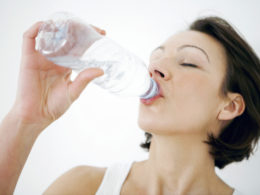Kidney
The kidneys are bean-shaped organs that serve several essential regulatory roles in vertebrate animals. They remove excess organic molecules (e.g., glucose) and it is by this action that their best-known function is performed: the removal of waste products of metabolism (e.g., urea, though 90% of this is reabsorbed along the nephron.) They are essential in the urinary system and also servehomeostatic functions such as the regulation of electrolytes, maintenance of acid–base balance, and regulation of blood pressure(via maintaining salt and water balance). They serve the body as a natural filter of the blood, and remove water soluble wastes, which are diverted to the urinary bladder. In producing urine, the kidneys excrete wastes such as urea and ammonium, and they are also responsible for the reabsorption of water, glucose, and amino acids. The kidneys also produce hormones including calcitriol,erythropoietin, and the enzyme renin, the latter of which indirectly acts on the kidney in negative feedback.
Located at the rear of the abdominal cavity in the retroperitoneum, the kidneys receive blood from the paired renal arteries, and drain into the paired renal veins. Each kidney excretes urine into a ureter, itself a paired structure that empties into the urinary bladder.
Renal physiology is the study of kidney function, while nephrology is the medical specialty concerned with kidney diseases. Diseases of the kidney are diverse, but individuals with kidney disease frequently display characteristic clinical features. Common clinical conditions involving the kidney include the nephritic and nephrotic syndromes, renal cysts, acute kidney injury, chronic kidney disease, urinary tract infection, nephrolithiasis, and urinary tract obstruction.[1] Various cancers of the kidney exist; the most common adult renal cancer is renal cell carcinoma. Cancers, cysts, and some other renal conditions can be managed with removal of the kidney, or nephrectomy. When renal function, measured by glomerular filtration rate, is persistently poor, dialysis and kidney transplantation may be treatment options. Although they are not normally harmful, kidney stones can be painful, and repeated, chronic formation of stones can scar the kidneys. The removal of kidney stones involves ultrasound treatment to break up the stones into smaller pieces, which are then passed through the urinary tract. One common symptom of kidney stones is a sharp to disabling pain in the medial/lateral segments of the lower back or groin. – http://en.wikipedia.org/wiki/Kidney
9 Simple Ways To Reduce Your Risk of Kidney Disease
- * Eat healthier foods such as fruits, vegetables, nuts and lean cuts of meat
- * Stay fit by exercising regularly
- * Maintain your blood sugar level and keep it under control
- * Regularly check your blood pressure and try keeping it low
- * Lower your salt intake and drink lots of water so that the kidneys will be flushed
- * Quit smoking
- * Limit our consumption of over the counter pills, try natural remedies
- * Have your doctor check your kidney functions regularly
- * If you have a family history of kidney disease then you should have regular kidney checks.








